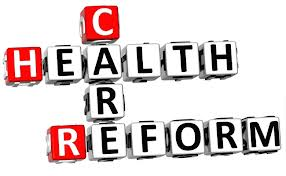 Below is the healthcare reform 2014 timeline. Are you prepared? Below you will find everything you need to know in regards to what will be implemented this year.
Below is the healthcare reform 2014 timeline. Are you prepared? Below you will find everything you need to know in regards to what will be implemented this year.
Healthcare Reform 2014
- New state health insurance exchanges are up and running. Income based tax credits will be available for many consumers in the exchanges. The sliding scale credits phase out for households that are four times above the federal poverty level (about $88,000 for a family of four).
- Medicaid is expanded to cover low-income individuals up to 133% of the federal poverty level—about $28,300 for a family of four.
- Insurers are prohibited from denying coverage to people with pre existing conditions, or charge higher rates to those with poor or chronic health conditions. Premiums (with limitations) can only vary by age, place of residence, family size, and tobacco use.
- Insurers are required to cover maternity care as they do other medical procedures
- All legal residents would be required to have health insurance—except in cases of financial hardship—or pay a fine to the IRS. The individual penalty starts at $95 each in 2014—rising to $695 in 2016. Family penalties are capped at $2,250; penalties will be indexed for inflation after 2016.
- The premium assistance credit amount is calculated on sliding scale starting at two percent of income for those at or above 100 percent of poverty and phasing out to 9.8 percent of income for those at 400 percent of poverty. The reference premium is the second lowest cost silver plan available in the individual market in the rating area in which the taxpayer resides. The premium assistance credits do not take into account benefits mandated by States. Employees offered coverage by an employer under which the plan’s share of the total allowed costs of benefits provided under the plan is less than 60 percent of such costs or the premium exceeds 9.8 percent of the employee’s income are eligible for the premium assistance credit. This section also provides for reconciliation of the premium assistance credit amount at the end of the taxable year and for a study on the affordability of health insurance coverage by the Comptroller General.
- Plans provided through the exchange will not be an eligible benefit under an employer‐sponsored cafeteria plan, except in the case of qualified employers (i.e., small employers, and, after 2017, large employers in electing states) offering a choice of plans to their employees through the exchange.
- Requires large employers to report to the Secretary whether it offers to its full‐time employees (and their dependents) the opportunity to enroll in minimum essential coverage under an eligible employer‐sponsored plan, the length of any applicable waiting period, the lowest cost option in each of the enrollment categories under the plan, and the employer’s share of the total allowed costs of benefits provided under the plan. The employer must also report the number and names of full‐time employees receiving coverage.
- Imposes an annual flat fee of $6.7 billion on the health insurance sector beginning in 2010. This non‐deductible fee would be allocated across the industry according to market share and would not apply to companies whose net premiums written are $25 million or less and whose fees from administration of employer self‐insured plans are $5 million or less. The public option, as well as CO-OPs and the national plan, will be subject to the insurance provider fee.
—————————————————————————————————————————————————————
Matthew D. Taber, M.S. is Chief Operating Officer of Medical Access USA (www.medicalaccessusa.com), a company which offers full access to medical care to patients and 100 percent reimbursement to primary care physicians through direct primary care models. Reach him by e-mail at mdtaber at me dot com or by phone at 615-669-8347 to receive a free webinar presentation and evaluation of your medical practice or hospital.





